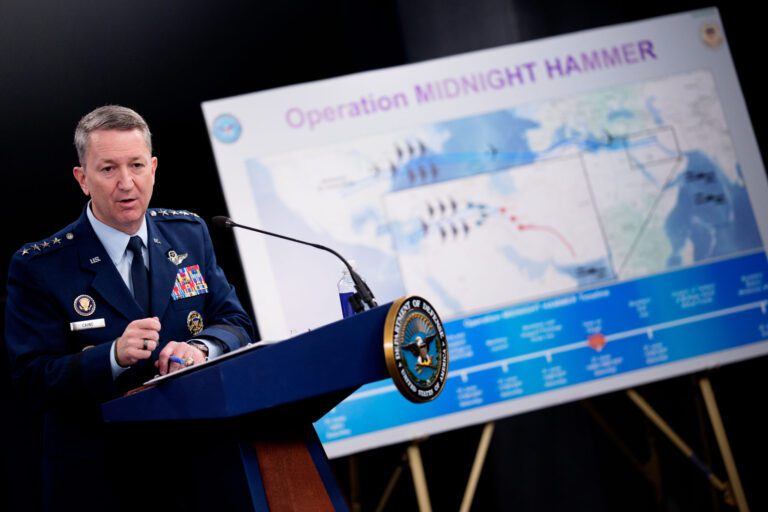America Launches Precision Strikes on Iran’s Nuclear Facilities
In a significant military operation dubbed “Operation Midnight Hammer,” the United States launched an intense offensive against three key Iranian nuclear sites early Sunday morning. This operation marks a pivotal moment in U.S.-Iran relations and sets the stage for future geopolitical dynamics.
Key Highlights of Operation Midnight Hammer
- Targeted Sites: The strikes focused on three critical locations: Isfahan, Natanz, and Fordow.
- Weaponry Used: The U.S. deployed 75 precision-guided weapons, including 14 GBU-57 bunker busters, designed specifically to penetrate hardened targets. This marked the first operational use of these powerful weapons.
- Command Structure: Centcom Commander Eric Kurilla oversaw the operation, which involved seven B-2 stealth bombers that undertook an 18-hour mission with multiple in-flight refuelings.
Mission Details
According to Defense Secretary Hegseth, the mission involved extensive planning that spanned months. In a press conference, he highlighted:
- Stealthy Execution: The operation was executed without detection, as Iranian surface-to-air missile systems failed to engage.
- Broad Participation: More than 125 American aircraft were involved, including intelligence and reconnaissance assets, as well as a guided missile submarine that fired two dozen Tomahawk cruise missiles targeting infrastructure at Isfahan.
General Dan Caine, Chairman of the Joint Chiefs of Staff, confirmed that initial assessments indicate "extremely severe damage and destruction" to all three Iranian sites.
Strategic Implications
The assault reflects a strategic shift in how the U.S. intends to address Iran’s nuclear ambitions. Hegseth stated, "We devastated the Iranian nuclear program," emphasizing the unprecedented nature of this military action under President Trump’s administration.
Context of the Attack
This military action follows a series of strikes by Israel targeting Iranian nuclear facilities. While Israel successfully damaged Natanz and Isfahan, they lacked the firepower needed to infiltrate the heavily fortified Fordow site, buried a quarter-mile deep in a mountain.
Given the unique capabilities of bunker busters to destroy such underground facilities, U.S. involvement was deemed necessary to achieve decisive results.
Political Reactions
Domestic Reactions
- Support from Allies: Israeli Prime Minister Benjamin Netanyahu and several lawmakers from Trump’s party praised the operation.
- Opposition from Lawmakers: However, dissenting voices emerged from Congressmen Thomas Massie and Ro Khanna, who criticized the strikes as an act of war.
Massie articulated concerns: “When two countries are bombing each other daily in a hot war, and a third country joins the bombing, that’s an act of war.”
International Response
Iran reacted swiftly to the U.S. strikes, with Foreign Minister Abbas Araghchi declaring the assaults an "act of aggression," warning of "dangerous consequences." In a statement, Iran asserted its right to defend itself vigorously against U.S. military actions.
Summary of U.S. Objectives
The U.S. maintains that its military operations aim to ensure peace through strength. Hegseth affirmed Trump’s commitment to potential follow-up actions, stating that any Iranian retaliation would be met with “far greater force.” Post-strike, President Trump remarked, “Now is the time for peace,” indicating a complex balancing act in U.S. foreign policy.
Conclusion
The execution of Operation Midnight Hammer signifies a critical point in military engagement and diplomatic relations with Iran. As the geopolitical landscape shifts, the potential for further escalations remains high, making it essential for global observers to stay informed about developments in U.S.-Iran relations.
For continued updates on military operations and international relations, follow Reuters or BBC News for comprehensive coverage.


